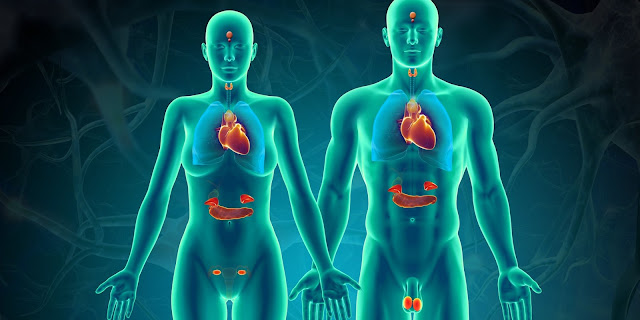Dodecanedioic Acid: Green Chemistry Hero
Dodecanedioic acid, also known as DDDA or 1,12-dodecanedioic acid, is an organic compound classified as a dicarboxylic acid. It is an important industrial chemical that shows promise in various emerging applications. As an alpha, omega-dicarboxylic acid, DDDA contains two carboxyl groups (−COOH) separated by a twelve-carbon (dodecyl) chain. Due to its linear aliphatic structure, DDDA possesses distinct properties that distinguish it from other dicarboxylic acids. In this article, we will explore the properties, production methods and applications of this useful industrial chemical.
Physical and Chemical Properties
DDDA exists as a white crystalline solid at room temperature. It has a melting
point of 103-105°C and boiling point of 293°C at atmospheric pressure. DDDA is
soluble in alcohols, esters and ketones but only slightly soluble in water. An
important characteristic is that DDDA forms crystals with a propensity for long
range order. This crystalline structure gives DDDA mechanical properties useful
for plastics and fibers.
Chemically, DDDA behaves as a typical Dicarboxylic
Acid. Its two carboxylic acid groups can react with alcohols, amines or
metal salts to form esters, amides or metal salts respectively. Due to the
absence of branching along the carbon chain, DDDA is more reactive than other
dicarboxylic acids. It readily undergoes additions, substitutions and
oxidation-reduction reactions along the alkyl chain. This chemical versatility
contributes to DDDA's diverse industrial applications.
Production Methods
DDDA can be synthesized by two main routes - oxidation of ω-alkyl-δ-aldehydes
or hydrocarboxylation of ω-alkenes. In industry, oxidation of
ω-alkyl-δ-aldehydes such as dodecanal is the preferred method. Dodecanal is
commercially available and can be oxidized to DDDA via the Köck-Sinn procedure
using chromium(VI) oxide as the oxidizing agent. The major advantage is high
yielding conversion of over 90% to DDDA. Drawbacks include costly chromium
waste treatment.
Alkene hydrocarboxylation has also gained interest as an "greener"
alternative process. In this method, 1-alkenes like 1-dodecene reacts with
carbon monoxide and water over a metal carbonyl catalyst to insert a carboxylic
group at each end of the alkene backbone. Copper or ruthenium carbonyl
complexes are commonly used catalysts. While avoiding toxic chromium,
challenges remain in catalyst recovery, leaching and scale-up to industrial
volumes. Overall, oxide oxidation remains dominant but hydrocarboxylation shows
continued development.
Uses and Applications
Given its reactivity and crystallinity, DDDA finds numerous applications as
monomers and precursors in polymers, fibers, coatings and lubricants. Here are
some of its major uses:
- Nylon Production
Nylon is the most iconic polyamide plastic derived from dicarboxylic acids.
DDDA reacts with diamines to make high molecular weight nylon polymers. Nylon
610, 612 and other nylons produced from DDDA exhibit good strength, resilience
and chemical resistance. They find widespread usage in automotive, electrical
and textile industries.
- Polyesters and Polyurethanes
DDDA provides the basic ester linkage in alkyd resins, polyethylene
terephthalate (PET) bottles and polyethylene naphthalate (PEN) fibers upon
reaction with glycols or diols. It also reacts with diisocyanates to form
polyurethanes used as coatings, adhesives and elastomers.
- Lubricants and Additives
Metal salts of DDDA synthesized by reacting with metal alkoxides function as
rust inhibitors and lubricant additives. Lithium DDDA in particular enhances
the viscosity index and oxidative stability of engine and industrial oils.
Amides of DDDA serve as corrosion inhibitors and pour point depressants.
- Fibers and Films
Linear DDDA polymers crystallize readily into strong fibers for textiles,
filters and reinforcements. Polyamides from DDDA exhibit high melt points
beneficial for heat-resistant fibers. Biodegradable films can also be formed
from DDDA-derived polymers for packaging.
Therefore in summary, DDDA's versatility makes it indispensable in large volume
production of diverse polymeric materials crucial for contemporary industry and
daily life applications. Its unique properties continue to inspire research
into new sustainable materials as well.
Conclusion
This article provided an overview of the important industrial chemical
dodecanedioic acid, including its properties, production methods and major
applications. As an alpha,omega-dicarboxylic acid, DDDA forms highly
crystalline polymers valuable for plastics, fibers, coatings and lubricants.
While current production dominates oxidation of aldehydes, greener catalytic
routes through hydrocarboxylation offer promising alternatives. Overall, DDDA
remains a cornerstone building block in polymer chemistry that continues to
enable technological advancements across numerous industries. Further research
aims to develop more sustainable production methods and innovative new
materials based on this widely used dicarboxylic acid.
Get More Insights On Dodecanedioic
Acid




Comments
Post a Comment